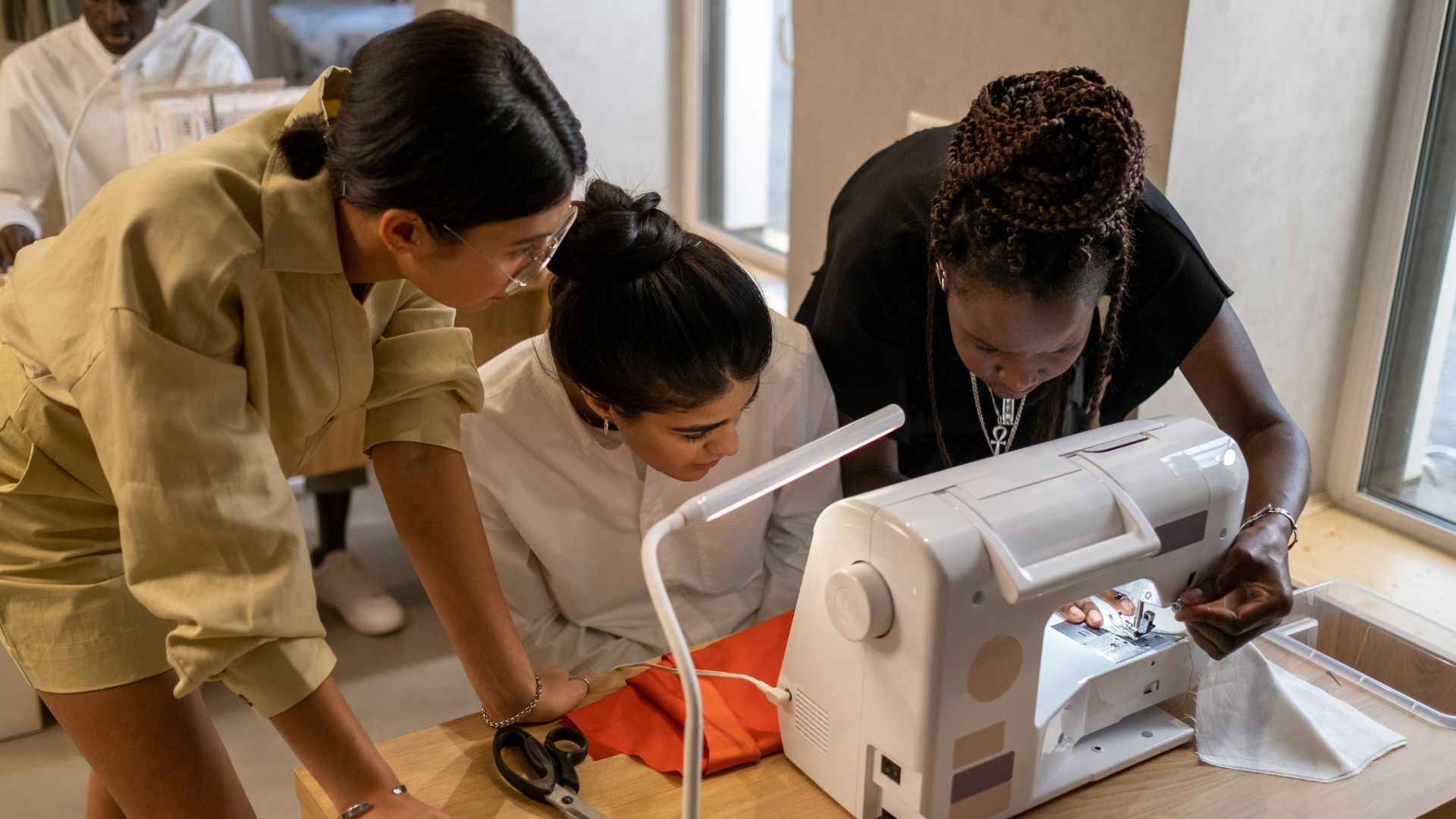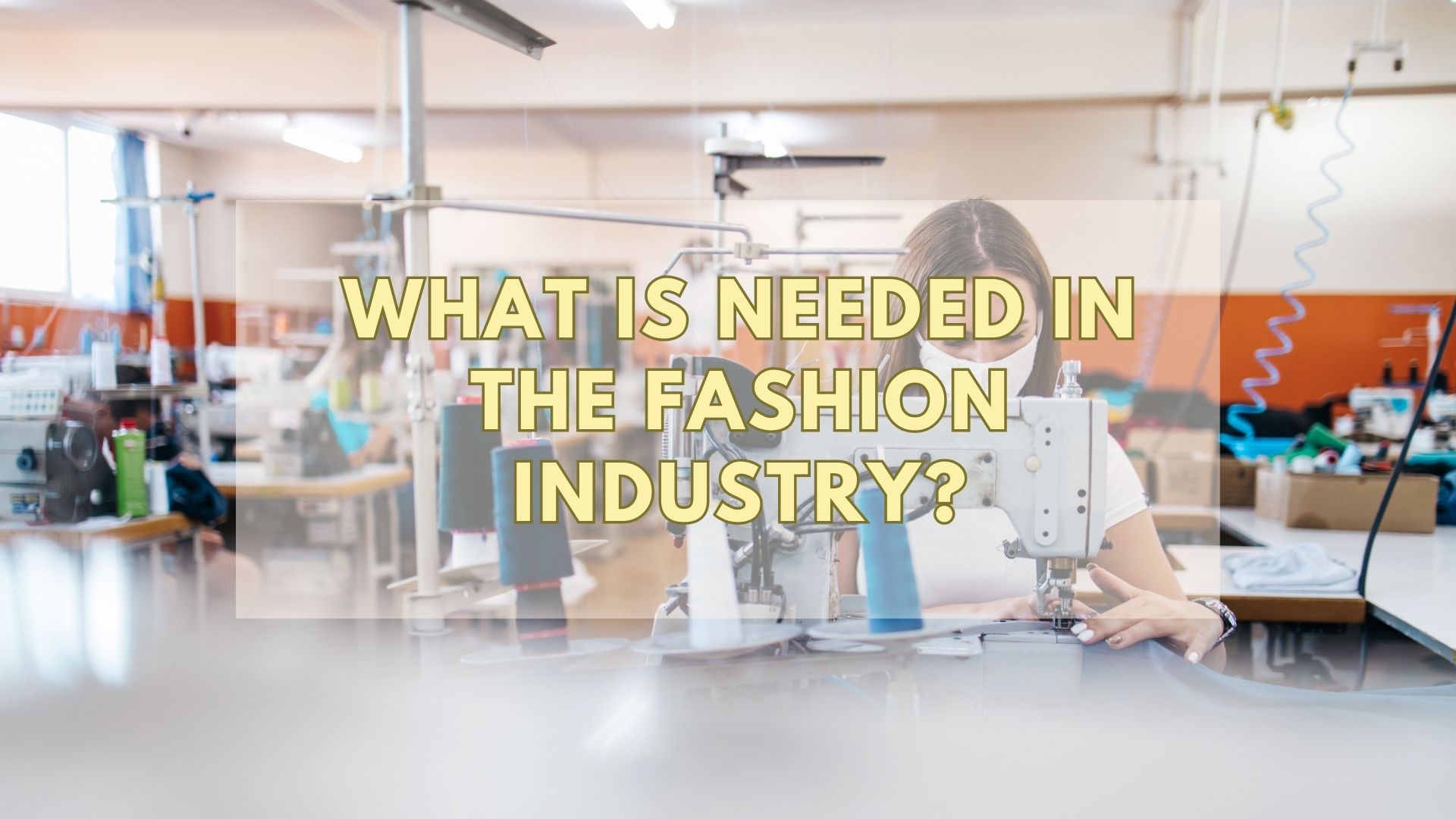Welcome to the glamorous world of fashion! From runway shows to red carpet events, this multi-billion dollar industry captivates us with its ever-evolving trends and iconic styles. But behind the glitz and glamour lies a harsh reality that needs our attention. The fashion industry is in dire need of change. With unsustainable practices, unethical labor conditions, and a lack of diversity, it’s time for us to redefine what is truly needed in this dynamic realm. In this blog post, we will delve into the current state of the fashion industry, identify its problems, and explore possible solutions that can pave the way for a more inclusive and sustainable future. So grab your stylish attire as we embark on this journey towards transforming the fashion industry from within!

The current state of the fashion industry
The current state of the fashion industry is a paradoxical mix of innovation and exploitation. On one hand, we see designers pushing boundaries with their avant-garde creations, using cutting-edge technology and sustainable materials. Fashion weeks around the world showcase these exceptional talents, capturing our imaginations with their artistic expressions.
However, beneath this glittering surface lies a darker reality. Fast fashion has become the norm, resulting in massive overproduction and excessive waste. The pressure to constantly churn out new styles at affordable prices has led to exploitative labor practices and environmental degradation.
Moreover, the lack of diversity within the industry remains a glaring issue. Runways are still dominated by models who conform to traditional beauty standards, leaving little room for representation from marginalized communities. This perpetuates harmful stereotypes and exclusionary practices that need urgent rectification.
Additionally, social media’s influence on the high school of fashion industries cannot be ignored. While it provides a platform for creativity and accessibility like never before, it also fosters an obsession with perfectionism and consumerism.
In essence, the current state of the fashion industry is at crossroads – torn between its artistic potential and its detrimental impact on people and planet alike. It is high time that we address these pressing issues head-on so that true transformation can occur in this ever-evolving realm.
The problems with the fashion industry
The fashion industry, like any other industry, has its fair share of problems. One major issue is the excessive waste generated by fast fashion. With trends changing constantly and clothes being produced at a rapid pace, there is a significant amount of clothing that ends up in landfills each year. This not only harms the environment but also perpetuates a culture of disposable fashion.
Another problem in the fashion industry is the lack of diversity and inclusivity. For far too long, certain body types, races, and genders have been underrepresented or even excluded from mainstream fashion. It’s important for designers to embrace all forms of beauty and create clothing that can be enjoyed by people from various backgrounds.
Labor exploitation is another pressing concern in the fashion industry. Many workers in garment factories are paid low wages and subjected to unsafe working conditions. Brands need to take responsibility for their supply chains and ensure fair treatment and compensation for all workers involved.
Additionally, there is an issue with overconsumption fueled by constant marketing campaigns encouraging people to buy more than they actually need. This leads to unnecessary spending as well as increased pressure on resources.
To address these problems, changes must occur at every level of the fashion industry. Designers should prioritize sustainable practices such as using eco-friendly materials and implementing circular production models. Consumers can play their part by embracing slow fashion – buying quality pieces that will last longer rather than falling into the cycle of fast-fashion trends.
Regulations should be put in place to protect workers’ rights and ensure fair wages throughout the supply chain. Education about ethical consumption should also be promoted so consumers can make informed choices while shopping.
It’s clear that there are several issues within the fashion industry that need addressing – from environmental concerns to labor exploitation and lack of diversity representation – These challenges require collective effort from designers, brands, consumers, policymakers alike if we want to create a more sustainable future for this vibrant yet flawed sector
What is needed in the fashion industry
What is needed in the fashion industry? It’s a question that has been asked time and time again as people become more aware of the issues within this glamorous yet problematic world. We need change, innovation, and a shift towards sustainability.
There is a pressing need for greater transparency in the fashion industry. Consumers want to know where their clothes are coming from and how they are being made. Brands should strive to provide information about their supply chains, ensuring ethical practices and fair treatment of workers.
Diversity is crucial. The fashion industry needs to embrace all body types, ethnicities, genders, and ages. Representation matters both on runways and in advertising campaigns. By showcasing a variety of individuals with different backgrounds and identities, we can redefine beauty standards and promote inclusivity.
Sustainability must be at the forefront of every decision made by fashion brands. Fast fashion has caused significant harm to our planet through excessive waste production and exploitation of resources. We need more eco-friendly materials, responsible manufacturing processes, recycling initiatives, and conscious consumerism.
Furthermore,…
Possible solutions to the problems in the fashion industry
Possible Solutions to the Problems in the Fashion Industry
1. Promoting Sustainability: One key solution to addressing the problems in the fashion industry is promoting sustainability. This involves utilizing eco-friendly materials, minimizing waste, and adopting ethical labor practices throughout the production process. Brands can also encourage consumers to make conscious choices by offering sustainable alternatives and educating them about their impact on the environment.
2. Embracing Diversity and Inclusion: Another important solution is embracing diversity and inclusion within the fashion industry. This means celebrating different body types, ethnicities, genders, and abilities in advertisements, runway shows, and campaigns. By doing so, brands can create a more inclusive environment that caters to a wider range of consumers.
3. Supporting Ethical Supply Chains: Many issues in the fashion industry stem from unethical supply chains where workers are subjected to poor working conditions and unfair wages. To combat this problem, brands should prioritize supporting suppliers who adhere to fair trade practices and ensure proper treatment of workers at every stage of production.
4.
Collaborating with Technology: The integration of technology can revolutionize various aspects of the fashion industry. From using 3D printing for sustainable manufacturing processes to implementing virtual reality for enhanced shopping experiences, leveraging technology can lead to innovative solutions that address current challenges.
5.
Promoting Slow Fashion Movement:
Promoting slow fashion movement encourages consumers to invest in high-quality garments that are designed for longevity rather than fast-paced trends. By shifting away from disposable fashion culture towards mindful consumption habits , it allows us reduce textile waste while appreciating craftsmanship behind each piece we own.
Conclusion
The fashion industry is undoubtedly a powerful and influential force in our society. However, it is not without its flaws and challenges. From ethical concerns to sustainability issues, there are several problems that need to be addressed in order for the fashion industry to thrive.
In order to improve the current state of the fashion industry, collaboration and transparency are crucial. Brands need to work together with consumers, designers, manufacturers, and policymakers to create a more sustainable and ethical system. This can involve adopting environmentally friendly practices such as using organic materials or implementing recycling programs.
Additionally, education plays a vital role in shaping the future of the fashion industry. By educating both consumers and professionals about sustainable choices and responsible consumption habits, we can create a demand for ethical products while also promoting awareness about labor conditions in the garment manufacturing process.
Furthermore, technology has proven itself as an invaluable tool in transforming various industries, including fashion. Innovations like virtual reality shopping experiences or blockchain technology for supply chain transparency have already started making waves within the industry. Embracing these technological advancements can help streamline processes and reduce waste.
Change starts with each individual’s choices – from what we buy to how we dispose of clothing items. By prioritizing quality over quantity and supporting brands that align with our values, we can contribute towards positive change within the fashion industry.
It is important for all stakeholders involved – from consumers to brands – to come together with a shared vision of creating a more sustainable future for fashion. Only by addressing these problems head-on and working collectively towards innovative solutions can we hope for lasting change within this dynamic industry.
